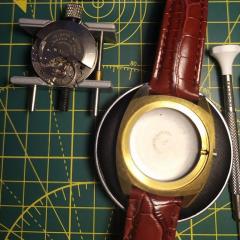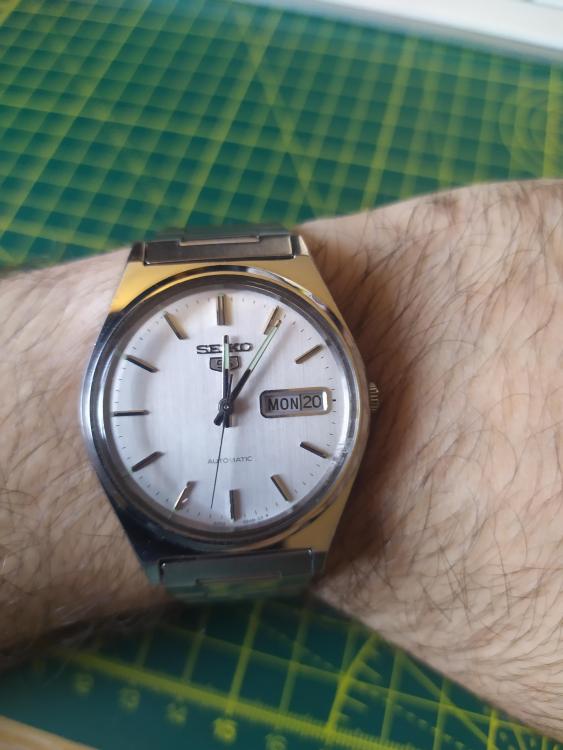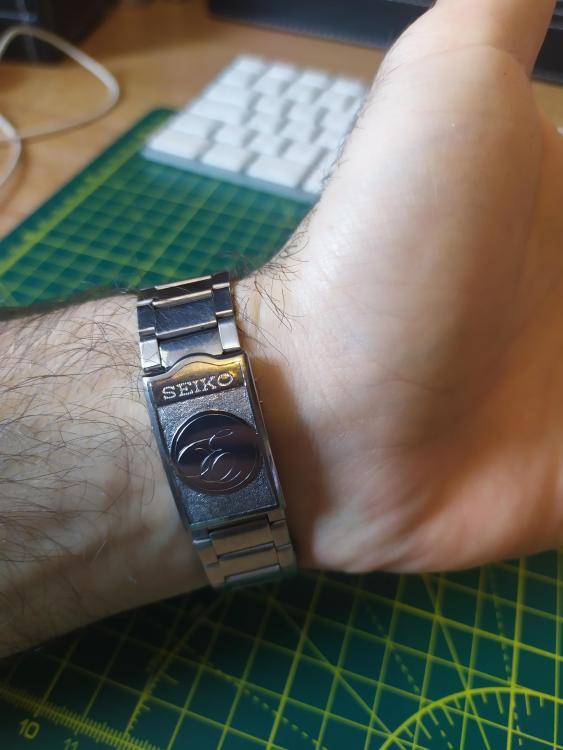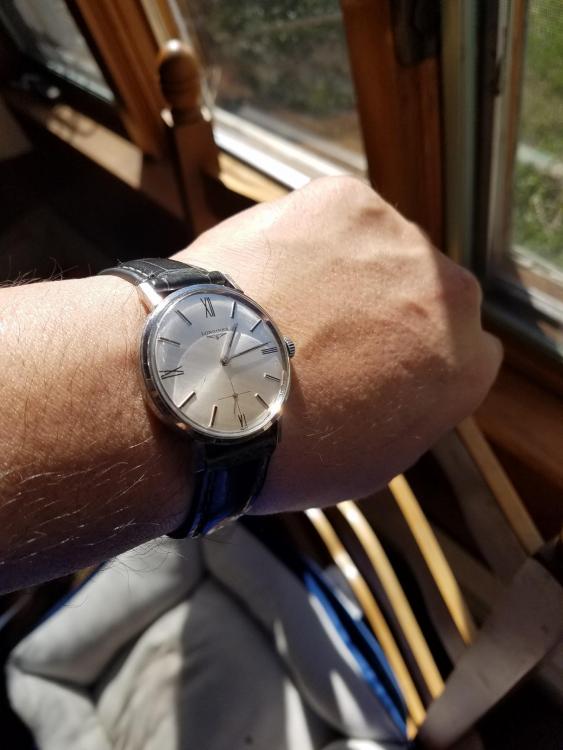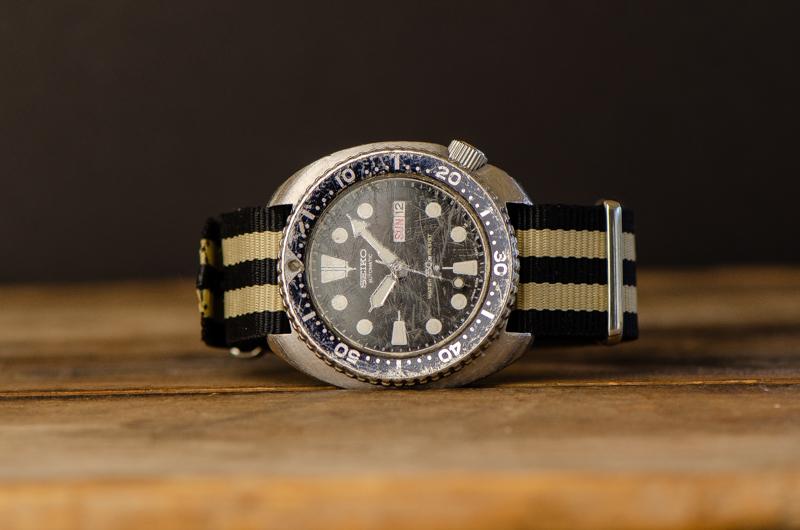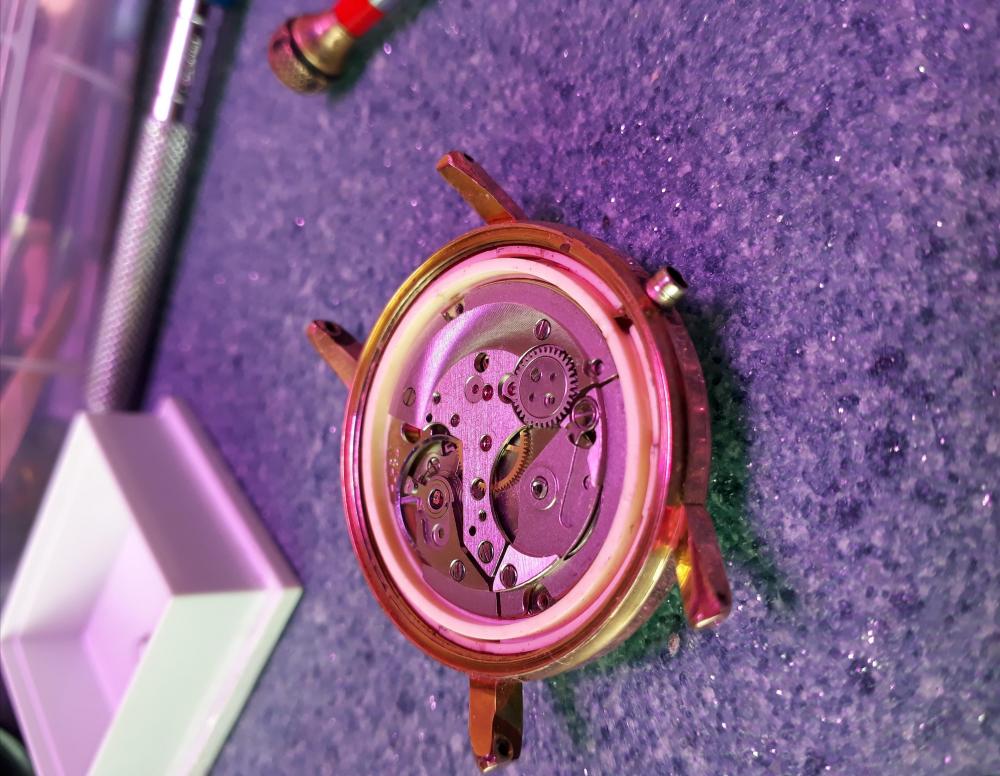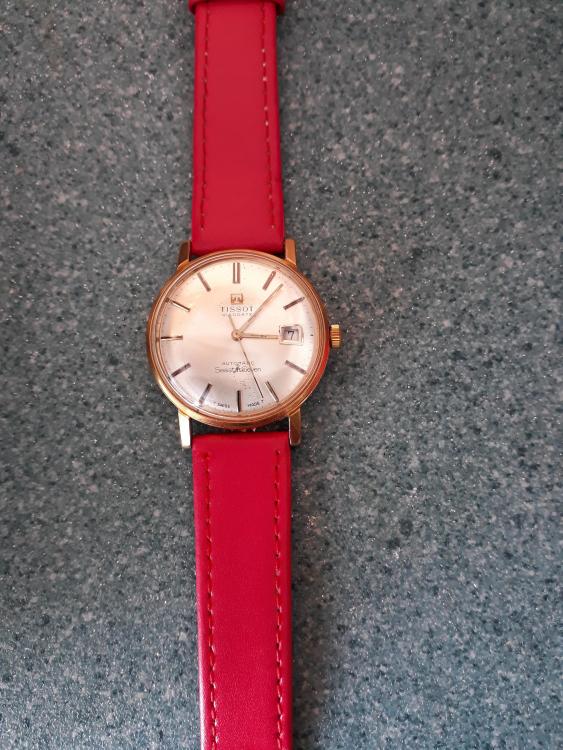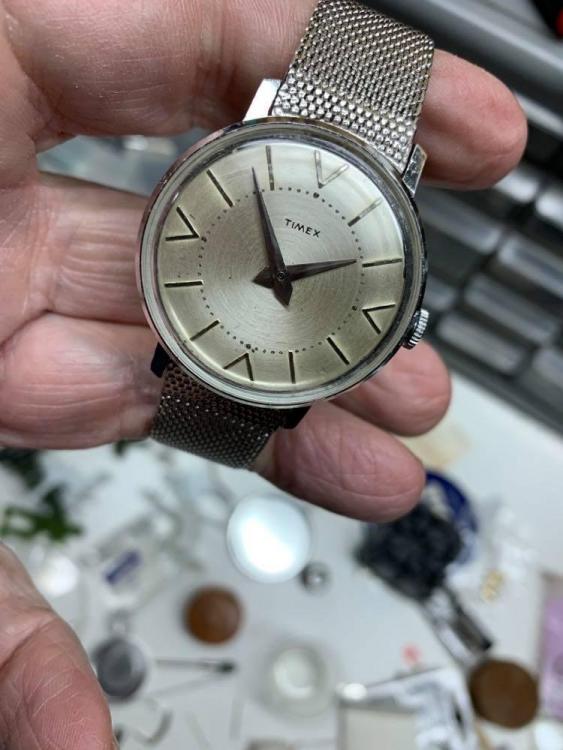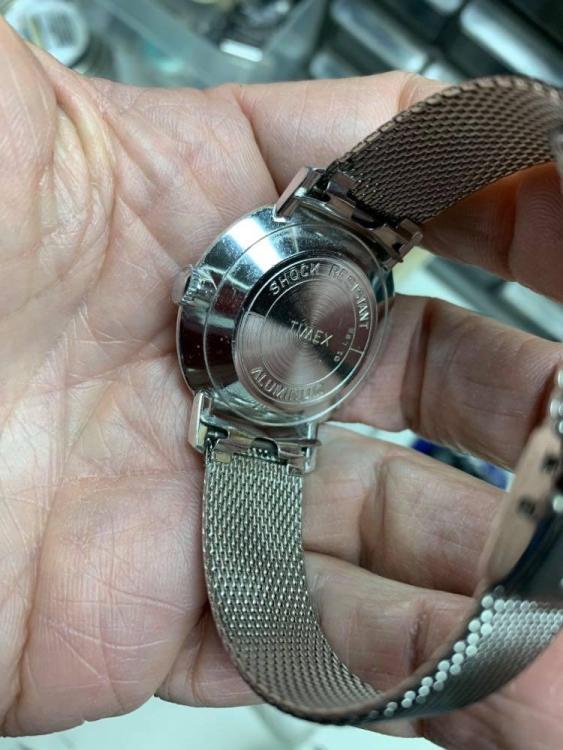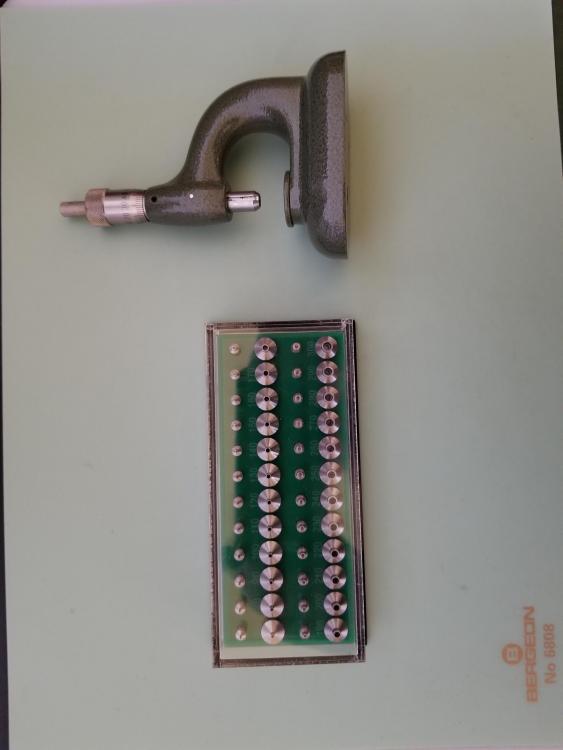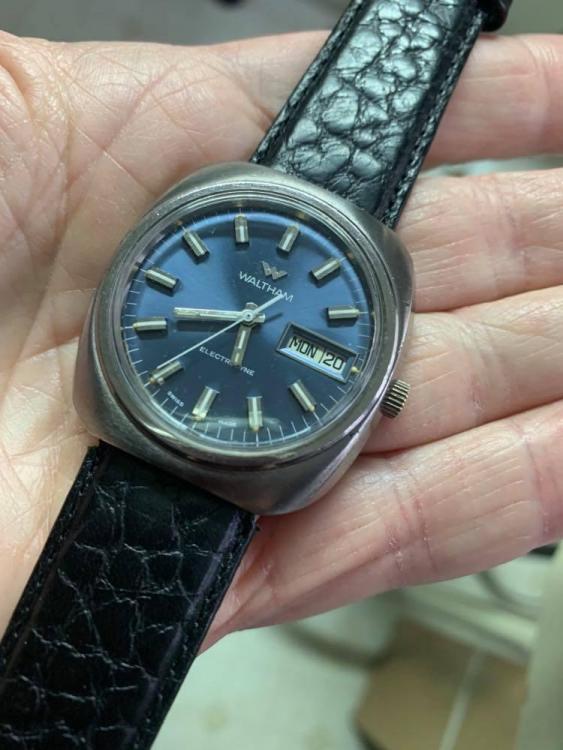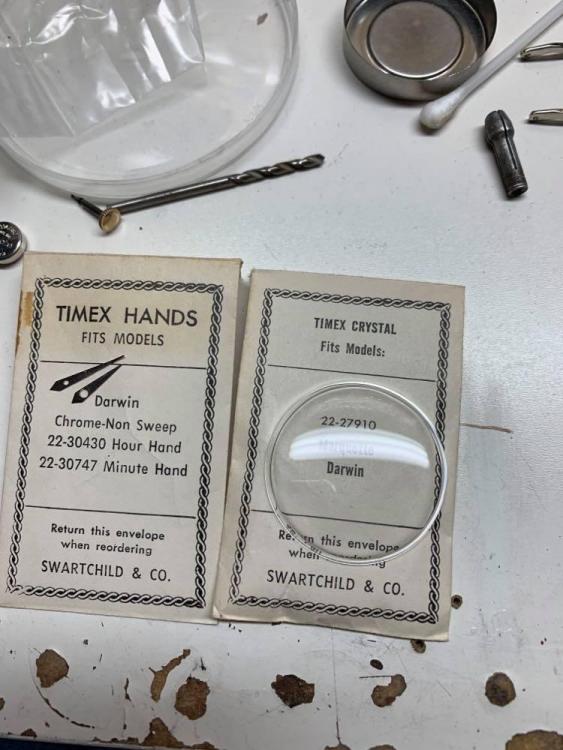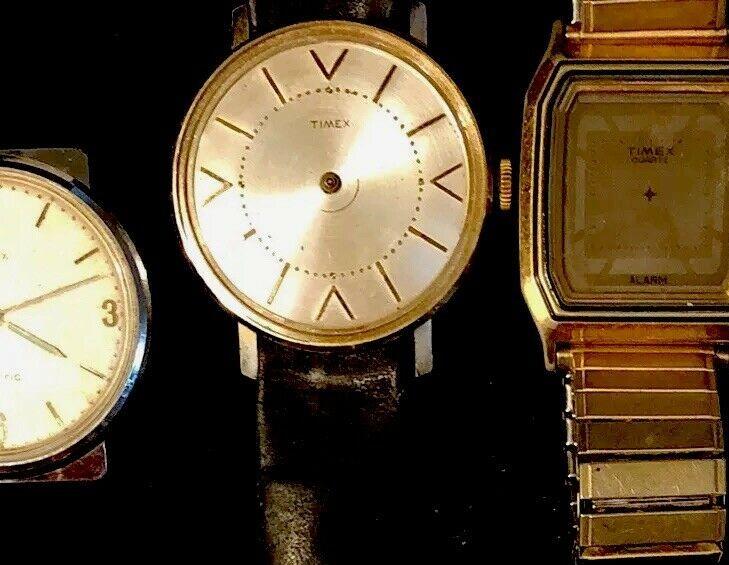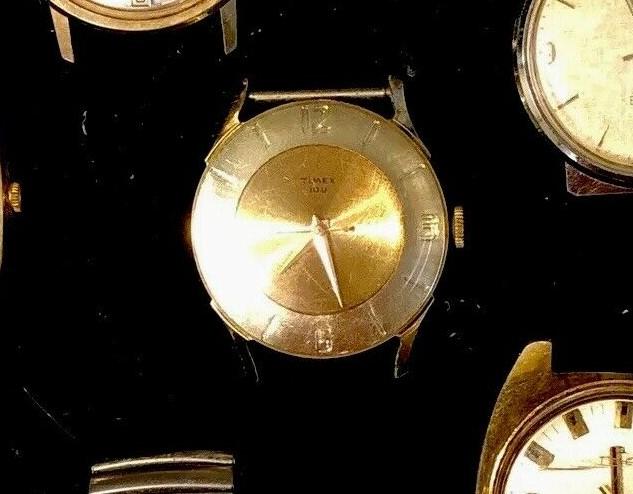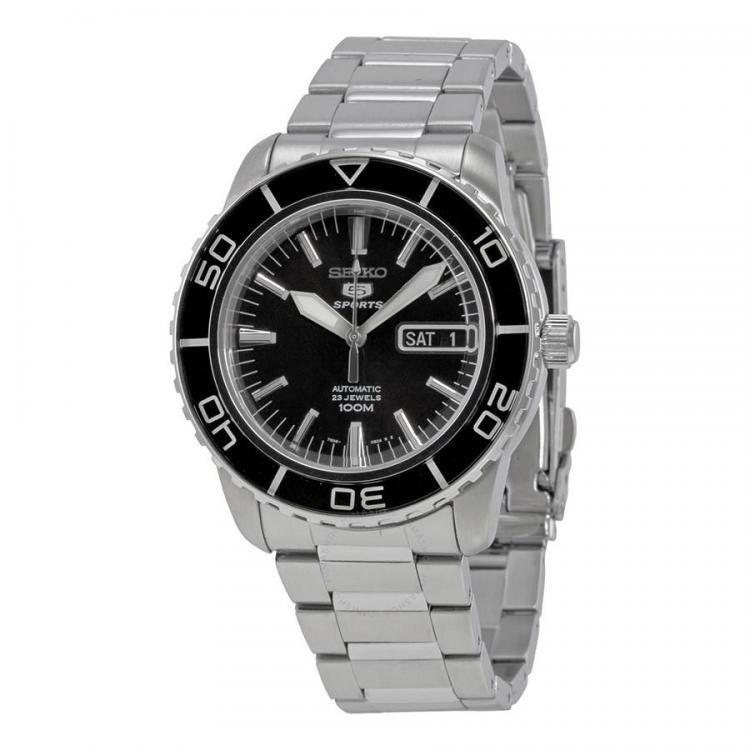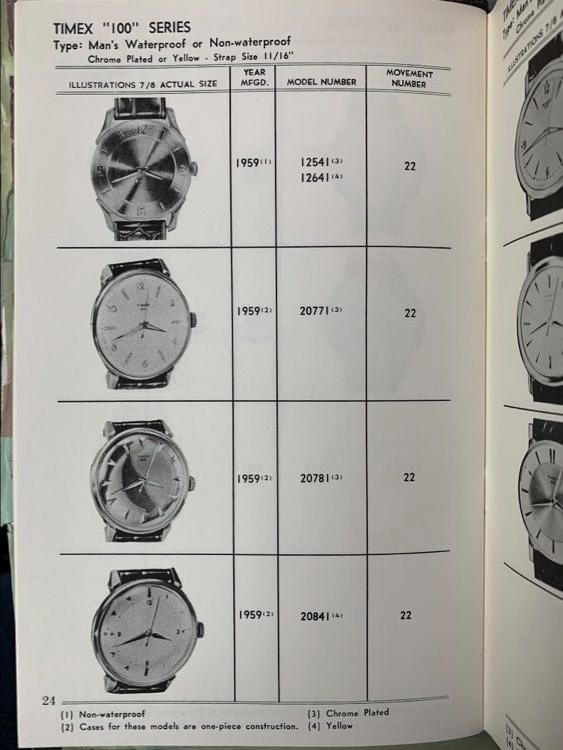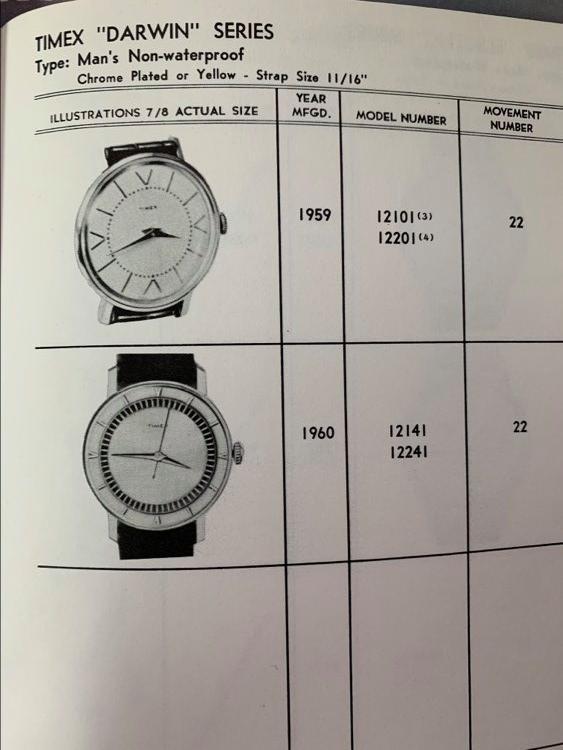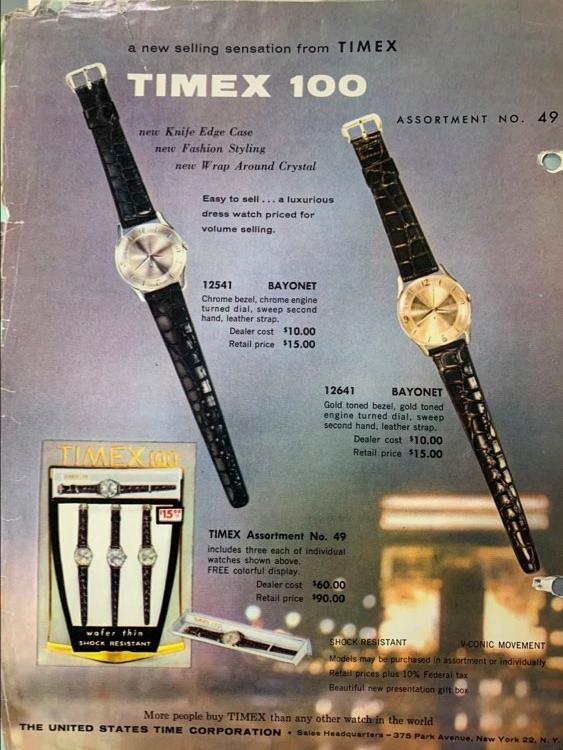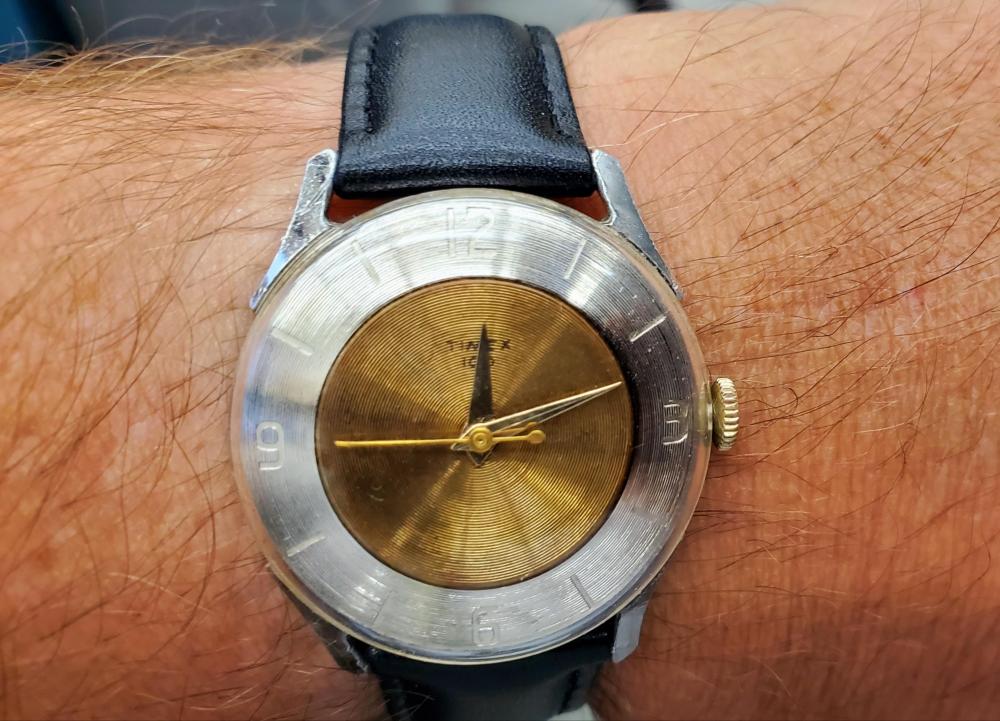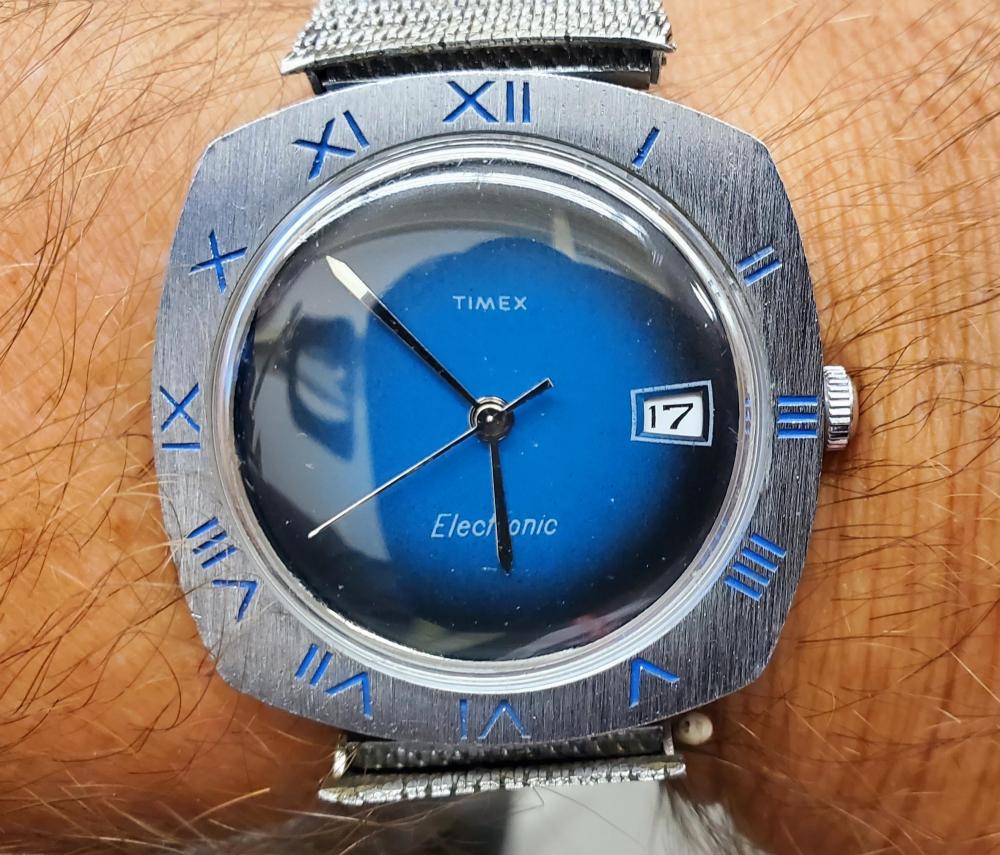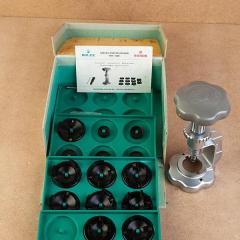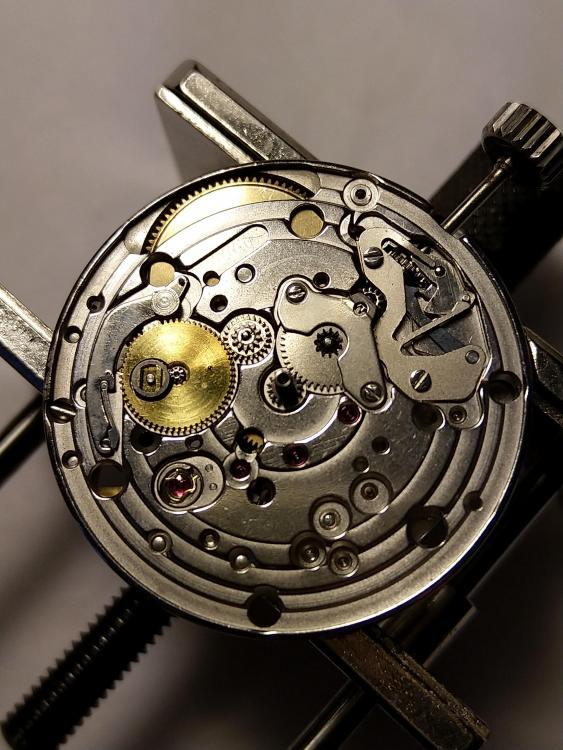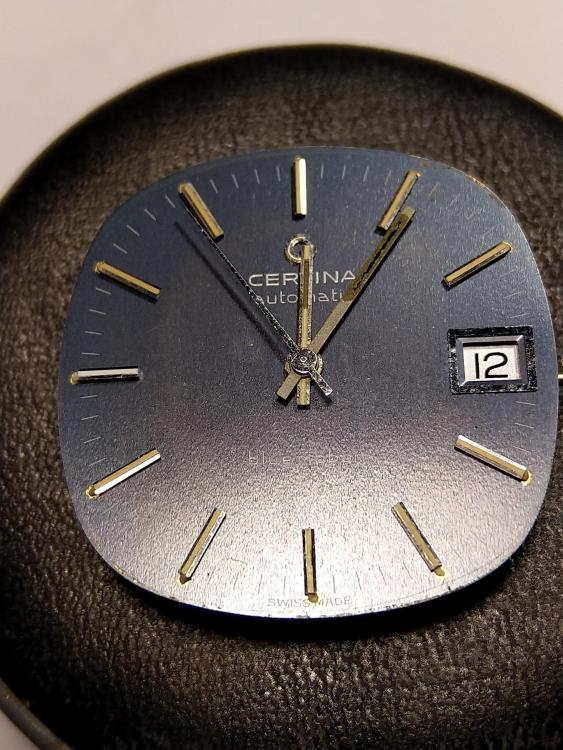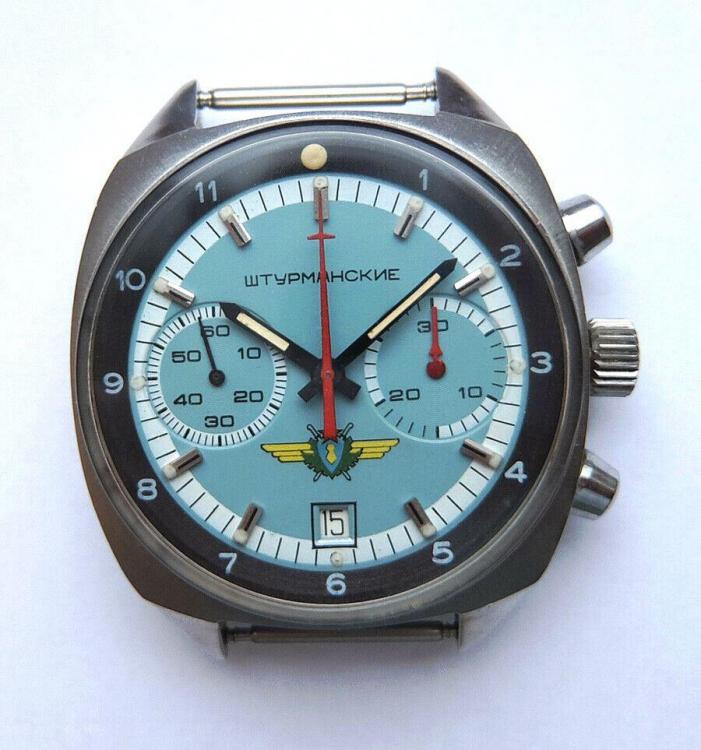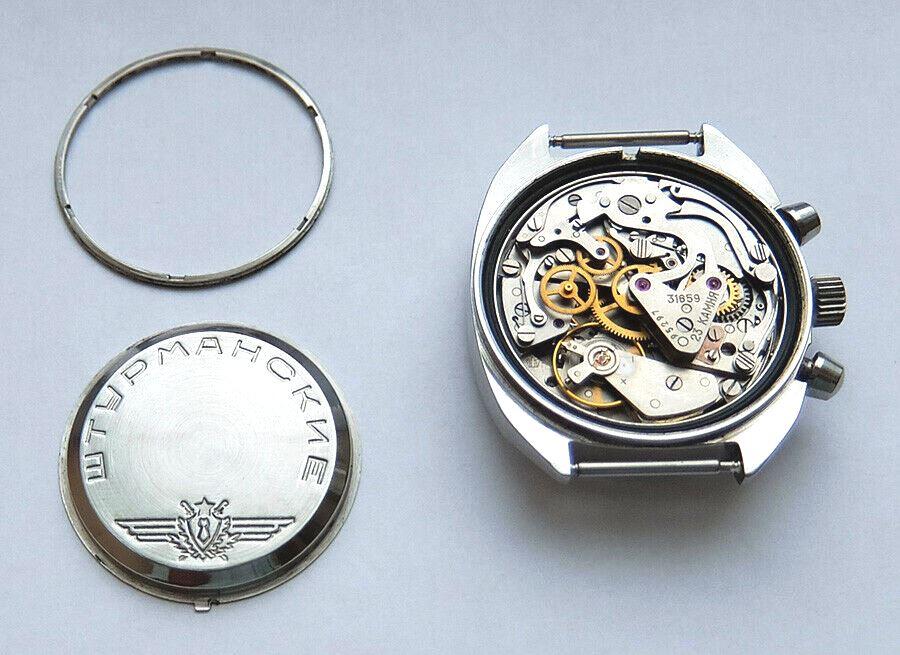Leaderboard
Popular Content
Showing content with the highest reputation on 04/20/20 in all areas
-
4 points
-
3 points
-
3 points
-
Just a quick review of Bergeon's ball case back opener 8008 which is really nifty tool. Enjoy (if you can )!2 points
-
As JDM says. I have one of those with a later movement and date. The front bezel lifts off - find a sharp knife to get under the join. Then the whole thing comes out of the front.2 points
-
Well never have I been so glad to find a broken watch in a draw, and it was a half decent watch. It was one that I had been using as a donor, so basically everything thing that was of any use had been removed. So click spring, rotor assembly, balance cock and wheel, winding wheel, screws, stem and crown, and to make matters worse when I took the cannon pinion off I broke the centre seconds wheel pivot when I was removing the cannon pinion. So the case isn't perfect but. It now runs and keeps time, so I'm happy that I found something to do. OK the strap probably isn't the best choice, but it will do.2 points
-
2 points
-
Hi Thought I’d post about this tool I’ve bought via Aliexpress. I think it was listed as a Horia clone but seems very well made to me. I have a second hand Horia with a 3mm bore, this has a 4mm. Can’t see that much difference really, but I actually bought it more for the anvils and pushers which cost a fortune for the Horia ones. I got it in a sale so all items together cost me £140. Even if I’d been charged VAT etc. it would only have been an extra £35ish. The price for brand new Horia 4mm tool, pushers and anvils on Cousins is currently £1800, so a bit of a saving. The whole lot seem well made and finished, measurements are accurate.1 point
-
1 point
-
Actually for T end mainsprings I find the main spring Winder is the best method if you understand how to do it. So you wind your odd end mainspring into the Winder but you leave a little bit sticking out. Then you insert the end and the Winder into the barrel rotate until the T is over the opening. Then I find a really big screwdriver works push the T end in to the hole and hold it there when you push the spring out. Because if you try to Porsche T end type Springs into the barrel it are from a Winder or a ring is never going to just magically pop into the hole and stay there. Even if you line it up and push it in is not going to stay it has to be locked into the hole and help there before the spring can be pushed out.1 point
-
Not dumb but the most frequently asked question by beginners, after how to remove stem perhaps. It's a "front loader", search this forum for that.1 point
-
1 point
-
Hello, Please allow me to introduce myself. I have been collecting watches since the late 90s and one thing leading to another, started playing with "watchmaking" in 2005 via an online course (only text and no video back then...) around an ETA 2801. I have stoped collecting long time ago (prices just became insane fro someone used to 90s prices) and have also put aside watch repairs for around 10 years (too little time and too many hobbies). A few years ago I decided to catch up with watch repair and have since taken some online courses and managed to reassemble the 2801 from 2005 (which had been sitting in a drawer in pieces since 2005) and also played with some Unitas movements (6497). Feeling confortable with these movements I have now decided to take a new challenge, service a Seiko 66 9990 that I got from my father - which took me to this forum via a google search. I tend to not speak or write unless I am absolutely certain of what I'm saying/writing so I hope you will be indulgent with me if I read more than I participate as I feel a totally novice in this area. Looking forward to sharing with you all Joao from Switzerland1 point
-
Hello! My name is Auke, 24 years old and recently started to get into watch servicing or watchmaking (although I am not anywhere near capable of repairing anything I'm afraid). My grandfather had been a watchmaker his whole life but passed before I was old enough to develop my own interest in this. As stated, I recently got into watchmaking and am learning as I go by taking down and reassembling any movement I can get my hands on, as long as I am comfortable with losing it when it won't go back together of course. I encountered some problems with the Novodiac springs in a 2824-2 and while searching online I encountered this forum and so here we are. Hope to learn a lot here!1 point
-
Hi all good watchmakers Just a short intro I started in watch repairs back in 1962 then opened my own jewelry shop in 1969 and I was in business until 1990 when I retired although I still repair clocks and watches and I still do engraving specializing in photo engraving with the laser engraver I have also made a couple of wooden gear clocks. I am 75 years old and still going strong.1 point
-
Thank you for sharing this, makes me want to test this theory with different lubrication in the barrel to see if it could be the lubrication or something else causing too high friction or if it is just to tense as you say, better write this up on my mile long todo list1 point
-
To assess if the somewhat sluggish action of the oscillating weight (seen in this video), was due to the mainspring being almost fully wound, I let the mainspring down completely, wound it up some, and then moved the watch around again while observing the oscillating weight. The result can be seen in the above video. My conclusion is that if the mainspring is fully, or near fully wound, the ratchet wheel will be resisting the wheels of the automatic winding device making the oscillating weight somewhat sluggish. I think this will be especially true for rotors having this type of plain bearing, unlike ball bearing rotors which swings more freely. Also, trying to reduce friction by polishing the bearing as demonstrated in my previous post paradoxically seems to increase friction, so I will not be doing that again. All that is required seems to be a good cleaning of the bearing and a drop of Moebius 9010. So, all that remains now is to wear the watch for a few of days, then let in wind down completely and see if the automatic winding has been able to wind the watch fully. For anyone interested I will let you know.1 point
-
Five minutes of FreeCad and an hour or so on the plastic spaghetti machine and I have a prototype eyepiece tube almost completed. Meanwhile I did a little more digging around and found the second microscope in the attic. The stand was in a box in the shed, so I re-united them. This one is a mixed bag. It has the original eyepiece holders, but they are 23.2mm and pretty bashed up, so no longer light tight, or straight relative to the optical path. I'm not sure if I'll print 30mm replacements, or patch up what is there and print 30mm adapters. As you can see from the image above, the working distance between the bottom of the optics and the subject is pretty good. The other odd thing I noticed is that the two different heads appear to be identical except that they are are not interchangeable. They have a different ratchet focussing arrangement. Very similar, but sufficiently different to make them non-interchangeable. Presumably even though they are both stamped "The Grey Five Forty" they are slightly different models. I also have a second stand. I wasn't sure about that. The stands however do appear to be interchangeable. I'm going to convert them to LED lights too, so I can run the light from a USB charger or a power bank. The second set of optics are very dirty, but I don't see any scratches or mould on them, so I'm going to have a crack at cleaning them back to factory fresh. As you can see from my quick game of "spot the hair on the shock spring', with a little bit of effort it should be possible to get some excellent images from them. Time for some alcohol, cotton buds and bamboo skewers. I'm currently measuring up the camera so I can design a rigid mount that will drop over the top of the eyepieces, which will make it possible to video things too. Hand holding the camera is very hit and miss, particularly as the zoom starts to "hunt", the moment the camera moves, which can cause the lens to crash in to the eyepiece if I am not careful.1 point
-
I have serviced/fixed many.400 day/anniversary clocks over the years. They are a real challenge because everything has to be perfect for them to run and are expected to run for 400 days with a single wind. The one thing that must be absolutely correct is the suspension spring. It must be perfectly straight with no kinks an also be the correct strength. If the spring is touch too strong or weak and you will just run out of adjustment. I really recommend this book which is my bible with these clocks. Horolovar 400-Day Clock Repair Guide Terwilliger (Charles)1 point
-
When you say it's bent and prevents the stem to be inserted, is it the setting jump lever (8) in the picture you mean? It doesn't look very bent to me. Just out of interess, could you take a picture with everything assembled in the keyless except for the minute train bridge (30). I attache the tech sheet so you could see which parts I mean, the definitions are ETA talk. _C_T_CT_2801-2_FDE_481538_15.pdf On the most modern ETA 28XX -2 parts from the keyless are the same . If you by some reason aren't allowed to buy the parts you need later on you could always send a private pm to me.1 point
-
I can totally relate. I restored my father's favorite Swiss Army watch a couple years ago. I haven't seen him get so emotional in a VERY long time. Hope it's a hit!1 point
-
1 point
-
1 point
-
Restore and repair motorcycles as a hobby. A few BMWs, Hondas, and a KLR. After the garage got filled up I started making model steam engines on my Sherline lathe and mill. I have an 1970 Rolex and I thought I’d make a leather band for it. Started leather crafting by making a few tools. Watch bands came out “OK”. My son gave me a Chinese Rolex years ago so I started to tinker with it. Now interested in watch repair. Dave in St Louis1 point
-
This type of clock is the sort many clock repairers do not like to repair. The first thing I need to see is the suspension spring. That is the long thin wire at the back. I need to see the back plate and movement as well. Can you take good clear photos and post them. Dick, as a new member we like new members to introduce themselves in the correct place in our friendly forum. Thanks.1 point
-
1 point
-
It does indeed. Furthermore I could 3d print an adapter to take the 23.2 mm eyepieces from the other microscope. I should be able to use anything from a 5x wide field 30mm dia up to a 25x 23.2mm dia. in conjunction with the 5x/40x lever to give a very broad range of magnification. The working distance between the base of the body of the microscope below the filter adapter ring and the subject is about 85mm and I may be able to adjust this by extending the length of the adapter tubes. 85mm is plenty of room to get my fat fingers, tweezers, screwdrivers or whatever in to the action.1 point
-
1 point
-
Nearly all the photos of the Bayonet I've found online had mix matched dials with gold and silver tones on one watch. I like the contrast. Interestingly enough I have a true '59 Darwin on it's way to me as we speak. I will be needing hands and a crystal for it as it looks like it's missing those. Also in this lot is another Bayonet with the 2 tone setup. I wish I had access to a copy of your catalogs @JerseyMo Would be great to narrow down years and models rather than trying to guess. On another note, even though these were considered "Cheap" they weren't really cheap, I feel it was more of an affordability. They were affordable to everyone . Adjusted for inflation the MSRP of $15 adjusted for inflation comes out to $133.05. Certainly nothing to sneeze at back then. I'd say a Seiko 55 Fathoms is the modern price/value equivalent (my opinion).1 point
-
this is a 100 Bayonet and not a Darwin. The Darwin is similar but does not have '100' on the dial. What I find odd is that the dial and the crown should be silver and not gold. But, Timex was known to sometimes mix parts. For example you will find many of the early 21 jewel with '400' on the case back. that's because the first 21 used the '400' case. Much like these 100's. same size just a different metal finish.1 point
-
The watch that started me on this strange quest, the Ronda "Rondo-o-matic" based Sicura "Voyageur" got an upgrade of sorts today. This is what I unwisely bought in October 2018, and it has been a bit of a favourite of mine ever since. It still needs a set of more appropriate hands, but I'm confident that I'll come up with something eventually, meanwhile I fitted a dive bezel and replaced the crystal which I fitted a while back, and subsequently cracked. The watch has been bounced around the world since I first fixed it up, so it also got another quick service.1 point
-
Today I'm sporting my new to me 1959 Timex 100 Darwin/Beyonet. I'm not sure what to call it because nearly everywhere online calls it a Darwin while @JerseyMo has called it a Beyonet. He is our resident Timex expert, so for now I will only call it awesome! Another 60 year old watch in shockingly good condition. Just needed a bath and some lube and it's running like a champ. I love the styling, simple yet attractive. The simple black strap compliments it perfectly in my eye. I have another one of these on its way to me along with a another variant of the 100.1 point
-
1 point
-
1 point
-
Wearing this one today, will post a new picture in the appropriate thread later.....1 point
-
You quoted my entire original post from 6 years ago, pictures and all, to add this (incorrect) bit of information?!? Hint: I've been a professional software developer for 31 years. https://lmgtfy.com/?q=featuritis1 point
-
stunning work, I really appreciate your time and effort to put this extensive document together. Well done sir...1 point
-
1 point
-
1 point


